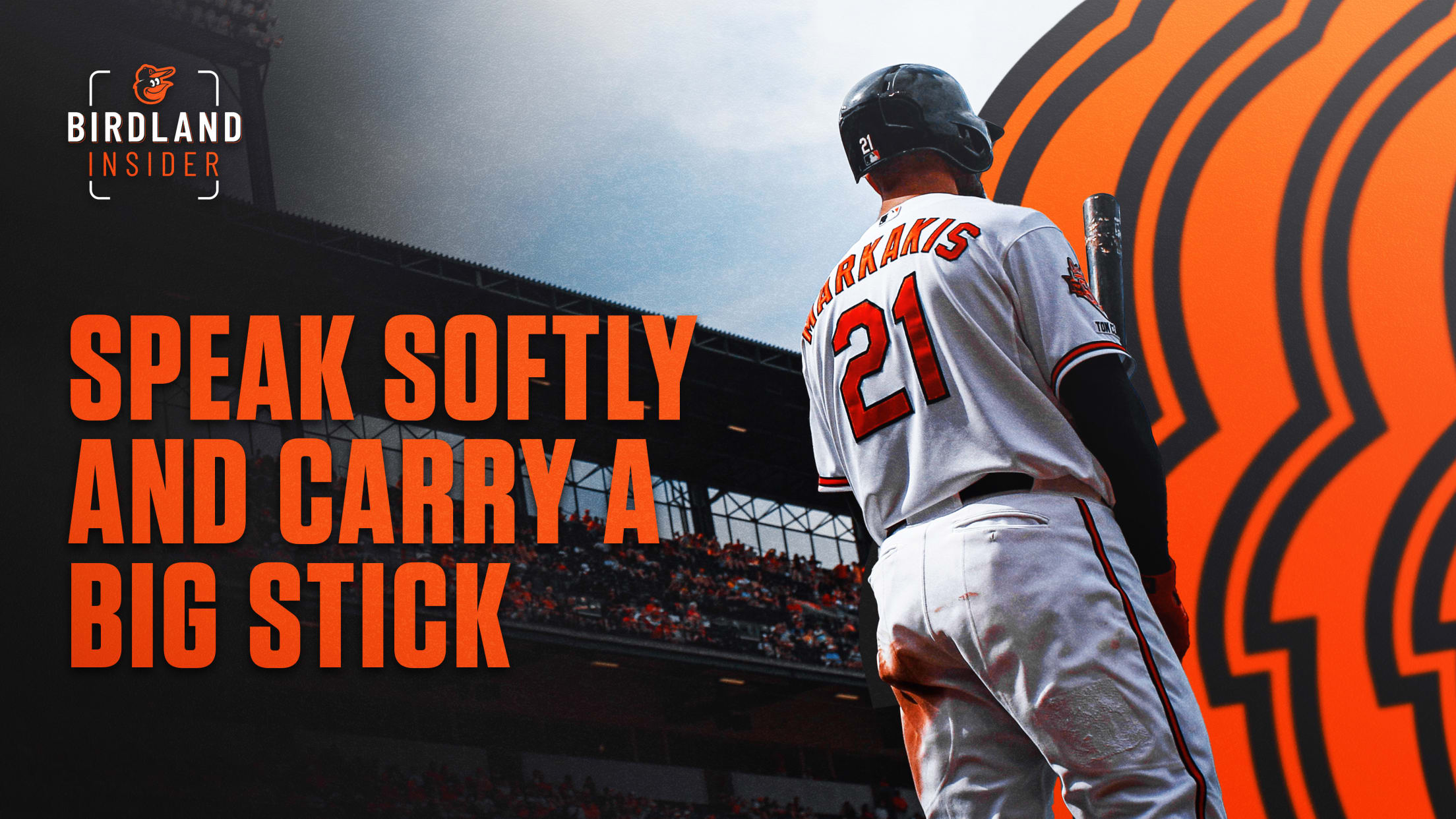
Speak Softly And Carry A Big Stick
Nick Markakis was the junior college player of the year in 2003, but it wasn’t just his .439 batting average, or the 32 home runs and 92 RBI that earned him the honor. He also went 12-0 with a 1.68 ERA and struck out 160 batters in 96 2/3 innings for Young Harris College in his native Georgia.
Other teams’ scouts were enamored of his pitching – he wore No. 21 because of Roger Clemens – but the Orioles preferred his bat, just as they had more than three decades earlier when they drafted Cal Ripken Jr.
Three years later, the first two months of Markakis’ big league career hardly portended why the Orioles made him the 7th overall pick in the 2003 amateur draft. He batted just .182 in April and was hitting only .219 entering June.
“He never once complained,” said fellow Orioles Hall of Fame inductee Terry Crowley, the team’s longtime hitting coach who had seen his share of struggling rookies, “so I knew even at an early age he was a man.”
Suddenly, with the work in the batting cage, the extra time with Crowley, things started to click. He batted .319 the rest of the season, finishing at .291 with 16 homers. That included the only three-home run game ever by an Orioles rookie – barely missing a fourth when his fly ball was caught at the wall.
Like a certain Hall of Fame shortstop who had struggled in his first months after being drafted as a hitter when everyone else liked him as a pitcher, the Orioles finally saw why they drafted Markakis.
A scout once said Markakis reminded him of Baltimore native Al Kaline, the Tigers’ Hall of Fame right fielder, “because he does everything well but he doesn’t do it very flashy.”
“That’s a pretty good comparison,” said Orioles legend Jim Palmer, “but he reminds me more of George Brett because he’s so good at hitting the ball to left, center and right. He really can hit the ball where it’s pitched.”
Markakis went on to hit .290 with 141 home runs in his nine years with the Orioles. He won two Gold Gloves with the Orioles and had 93 outfield assists, tied for second in club annals (with teammate Adam Jones) behind Paul Blair (105).
His .994 career fielding percentage ranks first all-time among Major League right fielders.
In his second season in the majors, Nick Markakis carried a .300 batting average into the final game of the season, going on a 12-for-19 tear in the final week. He had played in each of the Orioles’ first 161 games, but manager Dave Trembley didn’t have him in the lineup for the last game, trying to protect his .300 average.
“He got mad at me,” Trembley said. “He didn’t care about .300. How many guys are like that? Are you kidding me? This is a selfish business. To me, that tells you all you need to know about him.”
By his third season, the soft-spoken Markakis had become the face of the franchise. Not a rah-rah type, he let his work ethic and play lead the way.
“It doesn’t matter what situation he’s thrown in. It’s the same face,” said Adam Jones, his longtime outfield mate. “There’s no pressure. There’s no worry. There’s no such thing to him. He’s the most even-keeled player.”
Markakis led the Orioles in batting four times, doubles three times, RBI twice and homers once. And despite missing 58 games in 2012 – including the last 23 and the postseason when he broke his thumb when hit by a C.C. Sabathia pitch in September – he played 93.6 percent of the Orioles games during his nine years in Baltimore.
He finished his career with six years in Atlanta, where he played all but 11 games in his first four seasons. He finished with a .289 career batting average and 189 home runs.
“All you can do is give it your best and show people you enjoy the game and don’t take it for granted,” Markakis once said. “Just go out there, be yourself and play hard.”
Markakis did that every day, earning his place in the Orioles Hall of Fame.

